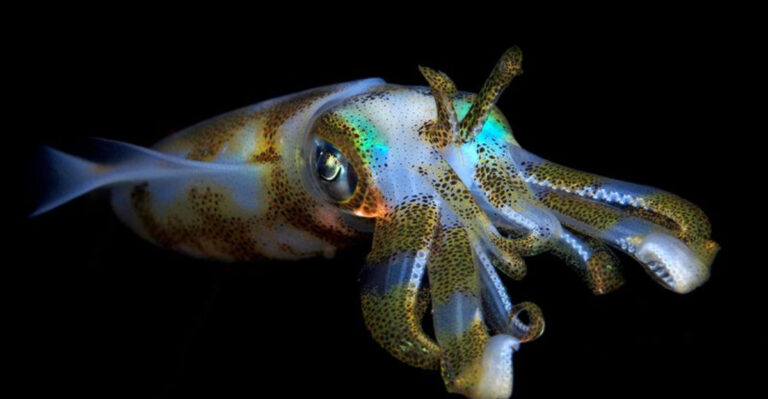12 Animal Species That Stopped Evolving Millions Of Years Ago
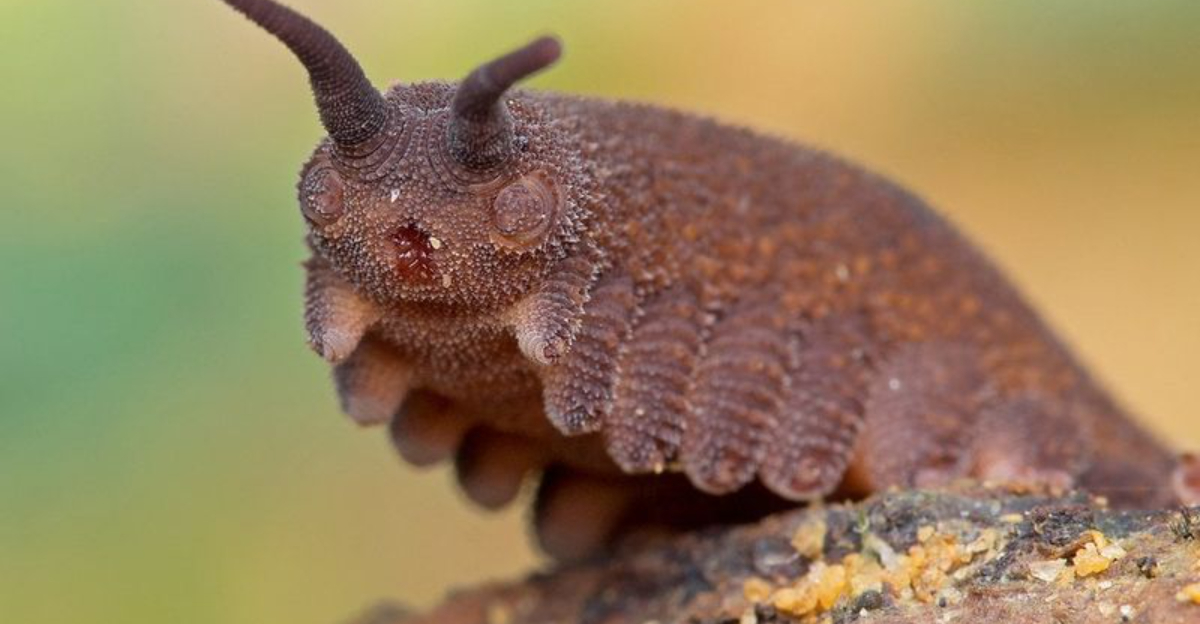
Ever wonder which animals have remained virtually unchanged for millions of years? While most creatures constantly adapt to their environment, some remarkable species hit evolutionary perfection so long ago that they simply stopped changing.
These living time capsules – often called ‘living fossils’ – provide scientists with incredible glimpses into Earth’s distant past.
Let’s explore twelve extraordinary animals that have remained virtually unchanged since the time of dinosaurs!
1. Horseshoe Crabs – 445 Million Years Of Perfection

Scuttling along sandy beaches just as they did before dinosaurs existed, horseshoe crabs are true survivors. Their distinctive helmet-shaped shells and spiky tails haven’t changed significantly in nearly half a billion years.
These remarkable creatures aren’t actually crabs at all but closer relatives of spiders and scorpions. With ten eyes spread across their bodies and blue blood containing copper (instead of our iron-based red blood), horseshoe crabs seem almost alien.
Scientists treasure these living fossils for medical research – their blood contains unique bacteria-detecting properties used to test vaccines and medical devices for contamination.
2. Nautilus – The Shell-Dwelling Time Traveler
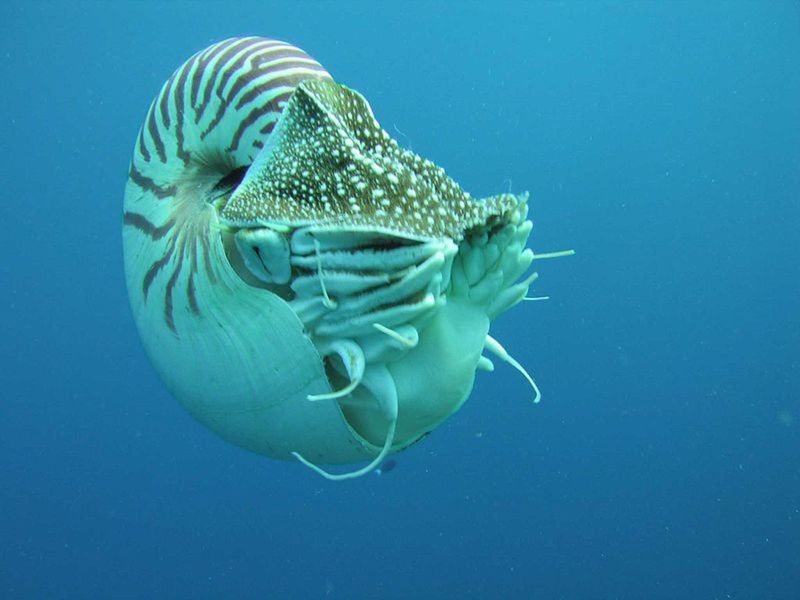
Gliding through deep ocean waters inside a spiral shell, the nautilus represents one of the oldest surviving cephalopod designs. While its cousins – squids and octopuses – continued evolving sophisticated features, the nautilus maintained its prehistoric blueprint for over 500 million years.
Each nautilus shell contains up to 90 separate chambers. The animal occupies only the outermost chamber, using the others to control buoyancy by filling them with gas or water.
Their distinctive tentacles (up to 90 of them!) lack the suckers found on other cephalopods, instead using sticky ridges to capture prey in the mysterious deep.
3. Coelacanth – The Fish That Came Back From Extinction
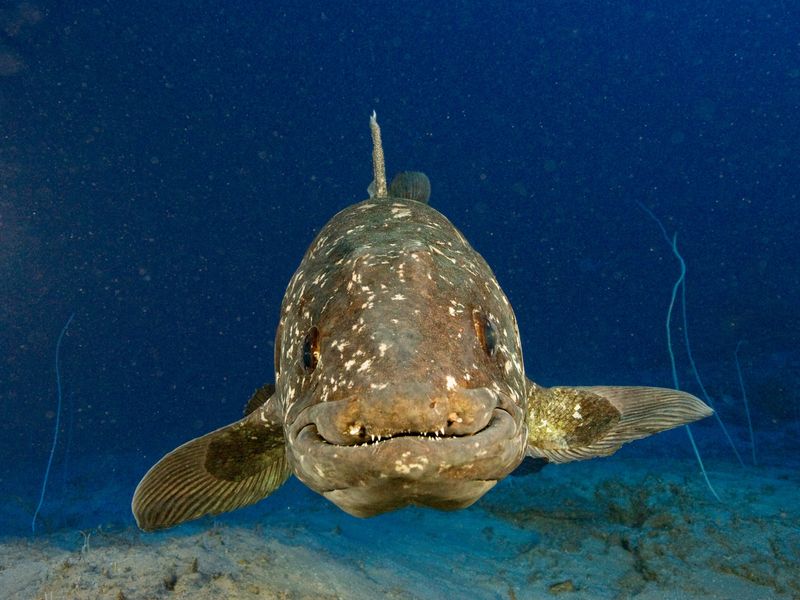
Scientists thought coelacanths vanished alongside dinosaurs until a fishing boat hauled one up in 1938! This remarkable rediscovery shocked the scientific world – imagine finding a living T-Rex!
These large, heavy-bodied fish grow up to six feet long and possess unique lobed fins that move in an alternating pattern similar to a walking motion. Many researchers believe this special fin structure represents an evolutionary link between fish and the first land animals.
Coelacanths have several other primitive features including a hinged skull that allows them to open their mouths incredibly wide and a special oil-filled tube called a notochord instead of a spine.
4. Tadpole Shrimp – Tiny Pool-Dwelling Survivors

Looking like miniature horseshoe crabs, tadpole shrimp have maintained their unique body plan for over 220 million years. These hardy little creatures live in temporary pools and puddles where few other animals can survive the harsh boom-and-bust cycles.
Their eggs perform an amazing trick – they can remain dormant for decades in completely dry soil until rain creates new pools. Within days of water appearing, tadpole shrimp hatch, grow to adulthood, lay eggs, and die before their temporary home dries up again.
Some species reproduce without males, with females essentially cloning themselves to maximize their limited reproduction window.
5. Tuatara – The Last Of Its Kind
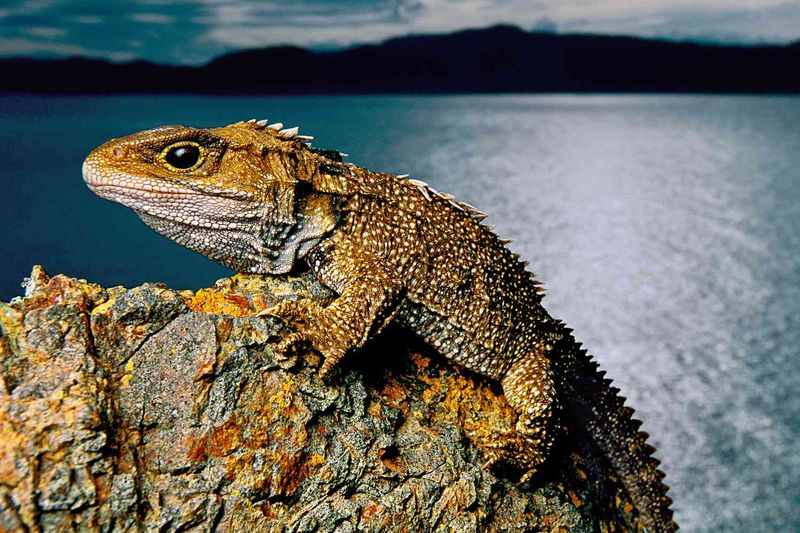
Native only to New Zealand, the tuatara looks like a typical lizard but represents something far more ancient. It’s the last survivor of an entire order of reptiles called Rhynchocephalia that flourished during the age of dinosaurs.
Unlike any other living reptile, tuataras have a mysterious third eye on top of their heads! This parietal eye has a lens, retina, and nerve connections to the brain, though it becomes covered with scales as they age.
These slow-growing reptiles can live over 100 years and have one of the slowest metabolisms of any animal. Their body temperature can drop to a chilly 41°F (5°C) while remaining active – far colder than any other reptile.
6. Goblin Shark – The Deep-Sea Ghost

With a face that looks like something from a nightmare, the goblin shark swims the deep ocean virtually unchanged for 125 million years. Its most striking feature is a bizarre extendable jaw that can shoot forward to snatch prey in an instant.
Rarely seen alive, these pink-skinned predators inhabit depths beyond 4,000 feet where sunlight never penetrates. Their soft, flabby bodies and weak muscles suggest they’re ambush predators rather than active hunters.
Unlike modern sharks that must swim constantly to breathe, goblin sharks possess primitive gill structures that allow them to extract oxygen while barely moving – perfect for conserving energy in the food-scarce deep sea.
7. Sturgeon – Armored River Giants
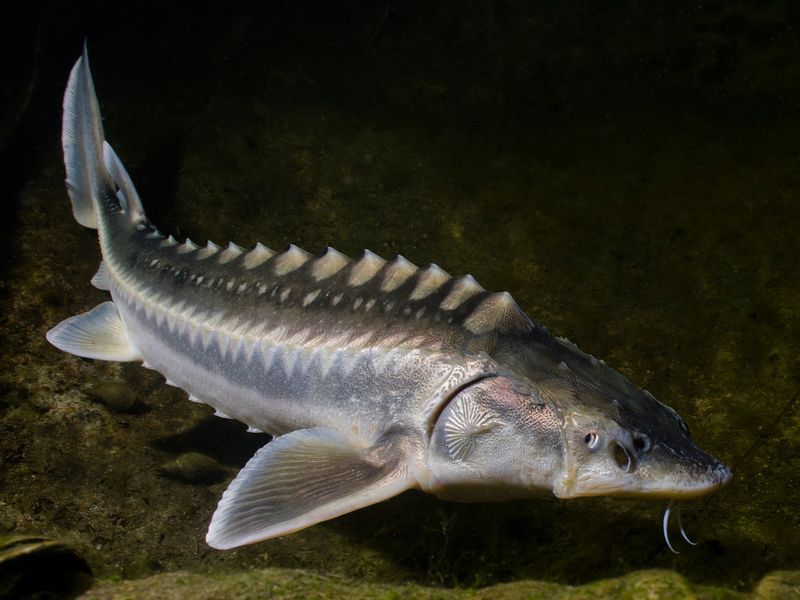
Swimming through rivers and lakes with their armored bodies, sturgeons have remained essentially unchanged for more than 200 million years. Instead of scales, they sport rows of bony plates called scutes along their bodies – a primitive feature from when most fish wore heavy armor.
These impressive fish can grow enormous, with some species reaching over 20 feet long and living more than a century. Their distinctive vacuum-like mouths extend downward to suck up food from river bottoms while their sensitive barbels (whisker-like feelers) help locate prey.
Sadly, their eggs – prized as caviar – have made them targets for overfishing, pushing many sturgeon species to the brink of extinction.
8. Platypus – The Mammal That Time Forgot

When European scientists first examined a platypus specimen, they thought it was a hoax – a beaver’s body with a duck’s bill sewn on! This bizarre creature preserves numerous traits from early mammal evolution that disappeared in other lineages.
Unlike nearly all other mammals, platypuses lay eggs instead of giving birth to live young. They lack teeth as adults, using horny plates to crush food, and they’re among the few venomous mammals – males have poisonous spurs on their hind legs.
Perhaps most remarkably, platypuses hunt underwater with their eyes closed, using electroreceptors in their bills to detect the tiny electrical fields produced by their prey’s muscle movements.
9. Lamprey – Jawless Wonders Of Ancient Seas
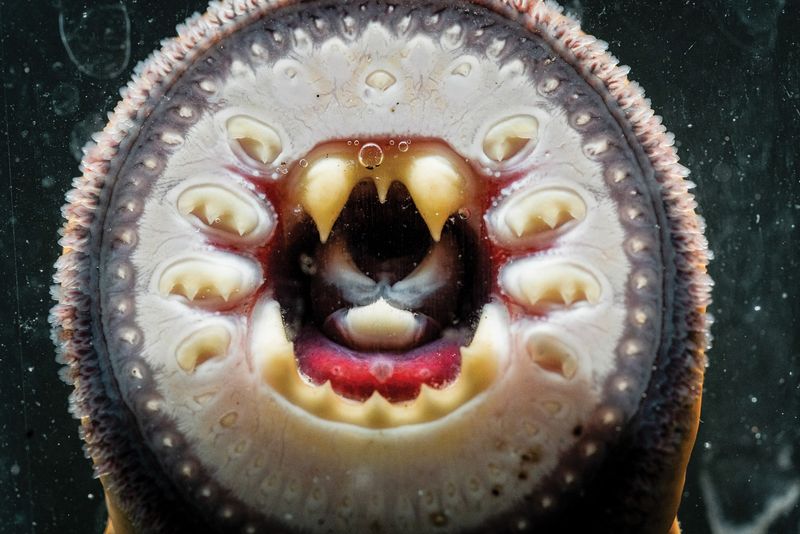
With their circular, tooth-lined mouths and long, eel-like bodies, lampreys represent one of Earth’s oldest vertebrate designs. These jawless fish have remained largely unchanged for 360 million years, predating even the dinosaurs by over 100 million years.
Instead of a hinged jaw, lampreys possess a suction-cup mouth ringed with razor-sharp teeth. Many species are parasitic, attaching to other fish and boring through their scales to feed on blood and fluids.
Unlike nearly all other vertebrates, lampreys lack a backbone. They’re supported instead by a flexible rod called a notochord – the same primitive structure that appears temporarily in human embryos before developing into our spine.
10. Frilled Shark – The Serpent Of The Deep
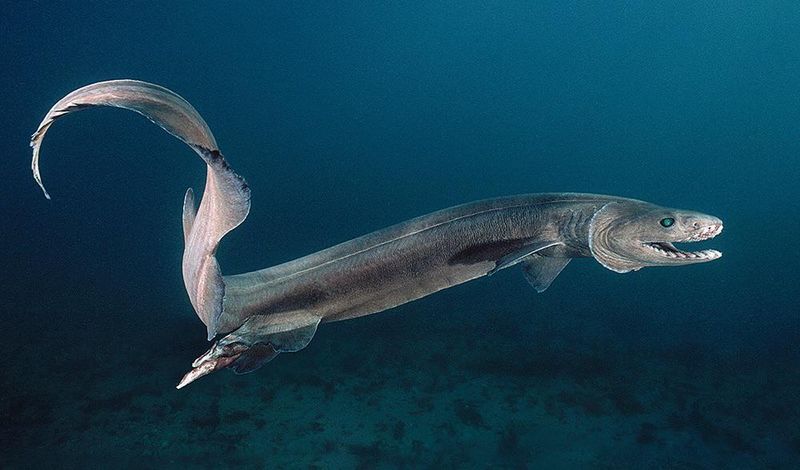
Looking like something from a sea monster legend, the frilled shark has patrolled deep ocean waters since the time of dinosaurs. With its elongated, eel-like body and 300 trident-shaped teeth arranged in 25 rows, it’s easy to see why sailors might have mistaken glimpses of these creatures for sea serpents.
Unlike modern sharks with their streamlined bodies, frilled sharks retain primitive features including an almost straight spine and gill slits that nearly encircle the neck. They’re named for the frilly appearance of these gill structures.
Scientists believe they hunt using their flexible jaws to strike like snakes, bending their bodies to create sudden forward momentum to capture prey.
11. Amami Rabbit – The Relic Of The Pleistocene
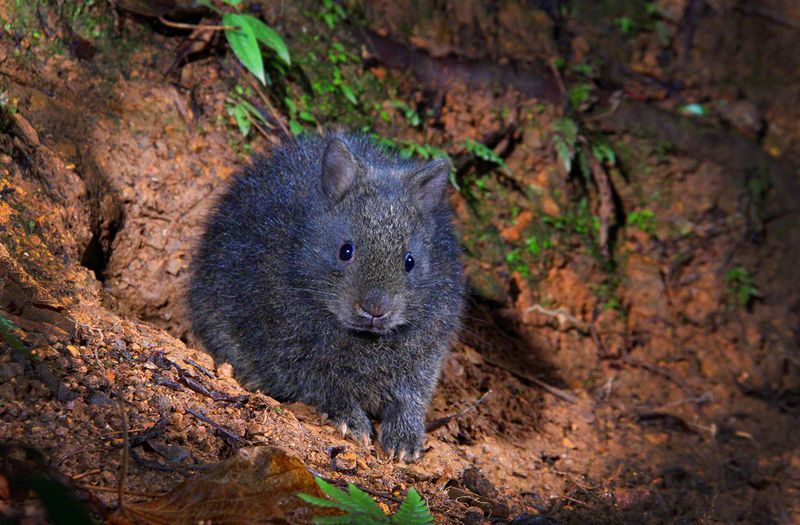
The Amami rabbit, found only on the Japanese islands of Amami and Tokunoshima, is often referred to as a “living fossil” due to its ancient lineage.
This small, nocturnal rabbit has remained remarkably unchanged for millions of years, with its physical traits closely resembling those of its Pleistocene ancestors.
Despite living in a rapidly changing environment, the Amami rabbit’s evolutionary stasis is a testament to its successful adaptation to its isolated habitat, where it has remained largely untouched by the pressures of modern evolution.
12. Velvet Worm – The Slow-Motion Time Capsule

Squirming beneath rotting logs in remote rainforests, velvet worms look like something from a science fiction movie but are actually living time capsules. These bizarre creatures—not actually worms but their own phylum, Onychophora—have maintained the same body plan for over 500 million years!
With soft, velvety skin and multiple stubby legs, they hunt by shooting sticky slime from specialized glands to immobilize prey. Their hunting technique was perfected eons ago and hasn’t needed upgrades.
When threatened, they curl into tight spirals—the exact same defensive posture seen in fossils dating back to before the first dinosaurs. Their bizarre appearance and hunting methods have served them perfectly for half a billion years.





